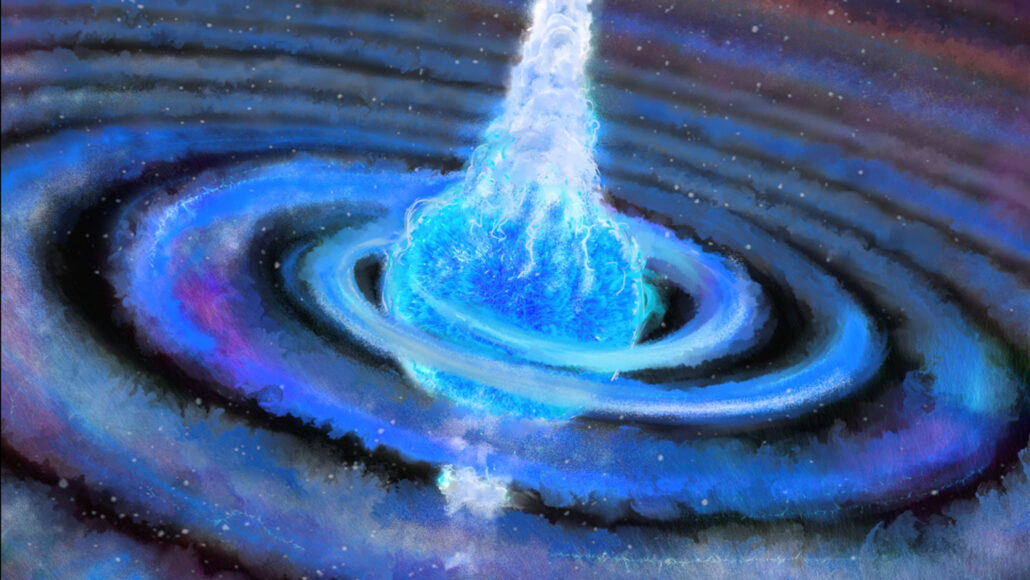It’s the first firm evidence of a rare cosmic phenomenon
 |
Jets of energy explode from a star that has cannibalized its dead companion
in this artist’s illustration. |
For the first time, astronomers have captured solid evidence of a rare double cosmic cannibalism — a star swallowing a compact object such as a black hole or neutron star. In turn, that object gobbled the star’s core, causing it to explode and leave behind only a black hole.
The first hints of the gruesome event, described in the Sept. 3 Science, came from the Very Large Array (VLA), a radio telescope consisting of 27 enormous dishes in the New Mexican desert near Socorro.
During the observatory’s scans of the night sky in 2017, a burst of radio energy as bright as the brightest exploding star — or supernova — as seen from Earth appeared in a dwarf star–forming galaxy approximately 500 million light-years away.
“We thought, ‘Whoa, this is interesting,’” says Dillon Dong, an astronomer at Caltech.
He and his colleagues made follow-up observations of the galaxy using the VLA and one of the telescopes at the W.M. Keck Observatory in Hawaii, which sees in the same optical light as our eyes.
The Keck telescope caught a luminous outflow of material spewing in all directions at 3.2 million kilometers per hour from a central location, suggesting that an energetic explosion had occurred there in the past. READ MORE




